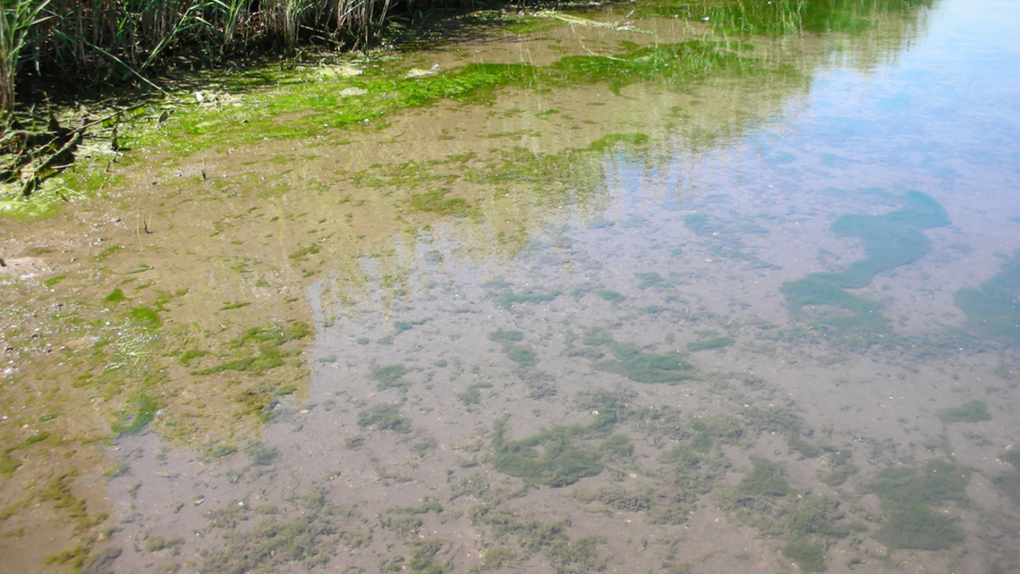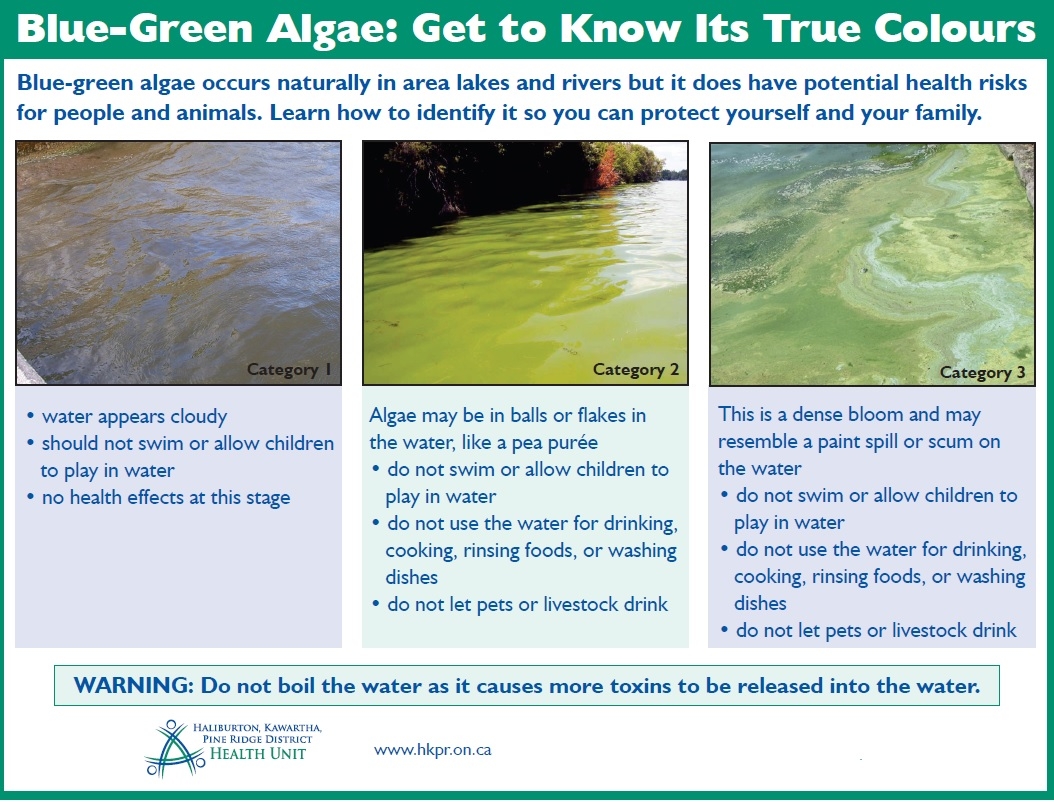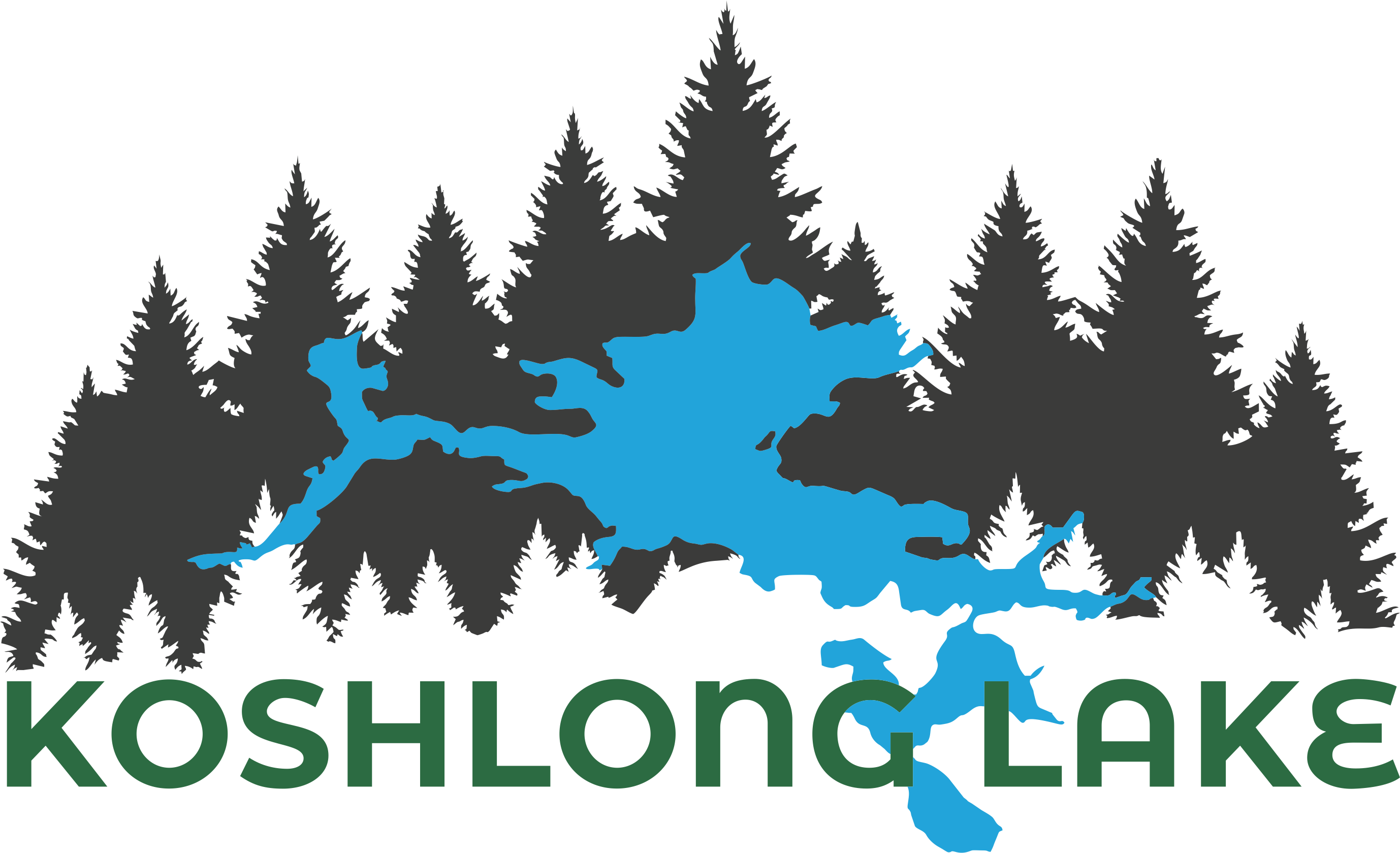"Blue-Green algae"
A Growing Threat to Lake and Human Health
what is blue-green algae, and why should you be concerned?
"Blue-green algae" is a naturally occurring, photosynthetic cyanobacteria. It is one of the oldest organisms on Earth, and when it is in balance with other species, it is an essential and beneficial component of the ecosystem.

In recent years, however, algae is increasingly out of balance, causing algal "blooms" -- visible communities of algae -- on inland lakes. These "blooms" block light penetration and deprive the lake of oxygen, reducing habitat for aquatic organisms and causing species death, including so-called 'fish kills'. In addition, blue-green algae may produce toxins so deadly that humans and pets cannot swim in, boat on, drink or utilize the lake water, even after UV filtration and boiling!
What causes algal blooms?
The factors contributing to algal blooms on freshwater lakes are complex, including:

1. The structure of the body of water: shallower and more stagnant areas appear more susceptible
2. Weather conditions leading to warmer, more stagnant water; climate change is a significant factor in increasing lake temperatures
3. Excess nutrients entering the lake from sewage, animal waste (eg, geese), road salt, agriculture and fertilizer runoff
4. Changes in algae consumption by larger organisms
What are the effects of blue-green algae blooms?
Algal blooms in Ontario have occurred from mid-summer through fall, when conditions are warmest, and have occurred across the whole province. Small blooms typically resolve within a few weeks; however, they can have devastating effects on the lake environment. Aquatic organisms, insects, fish and waterfowl may lose habitat and die off. The toxins produced by the algae can be deadly for humans and pets, to the point that the lake water cannot be used or consumed in any way, even with boiling or UV filtration.


Is blue-green algae a problem in Haliburton?
Algal blooms have been increasing across the entire province for the past two decades. In 2017, Ontario experienced a record number of 54 Toxic Blue-Green Algae Blooms; in 2020, that number increased by 68% to 91 blooms, and some of those occurred on lakes in Highlands East and Dysart et al.
As of 2020, there has not *yet* been a blue-green algae bloom recorded on Koshlong Lake, but with blooms occurring on similarly-sized and developed lakes in the area, there is absolutely cause for concern. The KLA participates in the province-wide Lake Partner Program, through which we monitor aspects of water quality which may create the conditions for algal blooms.
HOW CAN WE TELL IF A BLOOM IS HARMFUL?
"Blue-green algae" is not always blue or green, and it can be difficult to distinguish a harmful bloom from other algae, even for the experts! However, if water looks murky or like pea soup, or if smells like fresh-cut grass (new bloom) or rotting garbage (older bloom), assume toxicity may be present and take action

DO NOT! |
please DO... |
| Swim in the lake | Take pictures |
Let pets or animals swim in or drink from the lake |
Call the Spills Action Line of the Ministry of Environment, Conservation and Parks at 1-866-663-8477 (open 24/7) |
| Use the water, or allow water from the lake to enter your home/cottage -- most systems will not treat the water safely | Email the KLA, and call your Cottage Watch coordinator, road captain or Fire Captain |
| Boil or chlorinate the water -- this can release toxins into the air | Call the Haliburton Kawartha Pine Ridge health unit at 1-866-888-4577 extension 5006 |
| Seek medical attention if you experience skin, eye or throat irritation, allergic reactions or breathing difficulties | Tell your neighbours what you found; consider posting on the KLA message board or Facebook group |
| Eat fish caught in the lake |
The best way to avoid the economic, property, environmental and health damages caused by blue-green algae is to PREVENT blooms from occurring. Some factors, like weather and global warming, are difficult to control. But together, we can make a difference by:
1. Monitoring the health of our lake
2. Maintaining our septic systems in good working order
3. Restoring natural shorelines
4. Reading up on blue-green algae information assembled by our partners:
>> The Federation of Ontario Cottagers' Associations
>> The Coalition for Haliburton Property Owners' Associations
>> The Ontario Government on Blue Green Algae and Drinking Water
- Home
- Environment
- Threats to Lake Health
- Blue-Green Algae
Thanks to KLA member Rob Horsburgh for his photograph of Wallace Island used as the background photo throughout this site
